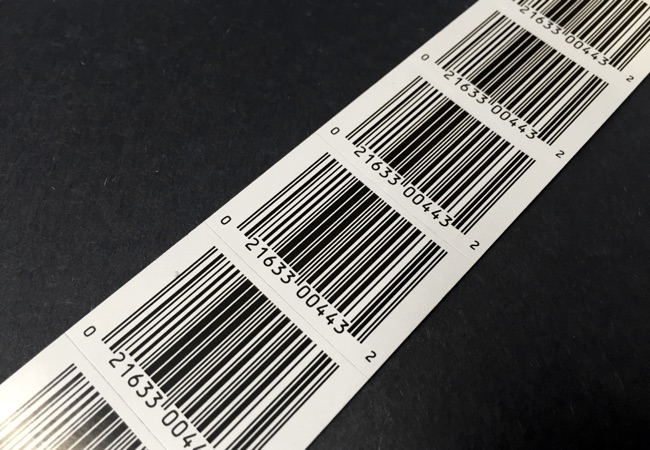What is the EAN meaning? If you’re researching barcodes, you’ve probably come across EAN. It can be a confusing system, but it’s important to understand if you’re selling a product nationally or globally. So what does it all mean?
What does EAN mean?
EAN stands for European Article Number, a standard 13-digit barcode that provides European products with individual article numbers. An EAN identifies the specific retail product type, specific packaging configuration, and the specific manufacturer. The EAN is a predecessor of the Global Trade Item Number (GTIN) standard, which replaced it in 2009.
What are EAN Codes?
EAN codes are barcodes that encode a product article number. They were originally used to encode EANs but have been used to encode GTINs since 2009. EAN barcodes are used worldwide, mainly for product lookup at retail point of sale, but they are also used for wholesale ordering, accounting, trackability, and more. EAN codes are similar to Universal Product Codes (UPCs). EANs are mainly found on any product outside of the US or Canada. Either an EAN or UPC code can be found on almost any consumer product in the world.
Difference between EANs and UPCs
There are 13 digits in an EAN number. UPC codes are 12-digit barcodes used in North America. Both codes function to identify products. Both the EAN and the UPC are part of the Global Standards 1 (GS1) international standards.
The UPC barcodes were first used in the early 1970s. Later, Europe, Asia, and Australia developed country codes that were added to the front of the UPC barcode, increasing it to 13 digits. Essentially, EAN and UPC barcodes are exactly the same except for the country code. UPCs don’t need a country code because they are only used in the US and Canada. The only visual difference between EANs and UPC, except the country code, is the placement of the numbers below the barcode, which aren’t scanned.
How do EAN Codes Work?
An EAN label consists of 13 digits and is unique for every product. They appear as black bars of varying widths that represent a series of numbers commonly displayed below the bars. The code is read by a barcode scanner and converted to the 13-digit EAN number they represent. The 13-digit EAN number identifies a corresponding product name and price in a retailer’s inventory system.
Different Types of EAN Codes
The most common EAN barcode is thirteen digits long and is known as EAN-13. This code was an offspring of the original 12-digit UPC-A code. EAN-13 numbers contain a 2-3 digit GS1 prefix, which identifies the country of registration or special type of product. For example, if the first digit of the prefix is a 0, this indicates that a 12-digit UPC-A code follows. A prefix with the first two digits of “45” or “49” indicates the following code is a Japanese Article Number (JAN). The GTIN is encoded inside the barcode. From left to right, the EAN-13 code consists of:
- The first digit of the country code
- An edge marker (consisting of 2 thin lines)
- One or 2 more digits of the GTIN system or country code
- A 4 or 5-digit GTIN manufacturer or company code or prefix
(The first 7 digits, consisting of the system or country code and the manufacturer’s code, make up the Global Location Number (GLN)
- A middle marker (2 thin lines)
- A 5-digit GTIN product code (used to identify products in retail stores so they can be scanned at supermarket checkouts.)
- A 1-digit GTIN checksum
- An edge marker (2 thin lines)
What Does the EAN Barcode Look Like
The EAN barcode consists of black lines of varying widths separated by white lines, making up a binary code system of zeros and ones. Black lines stand for ones and white lines for zeros. So that the code can be read in both directions, the first digit on the left is always odd. This allows the scanner to recognize the reading direction and rotate the code during decoding if necessary.
A less commonly used code is the 8-digit EAN-8 barcode. This code was created for use on packages that were too small to use EAN-13. Other types of EAN codes include the 2-digit EAN-2 and the 5-digit EAN-5. They are supplemental codes generally placed on the right-hand side of EAN-13 or UPC and are mainly used for periodicals such as magazines or books to indicate the current year’s issue number. They can also be used on weighed products, like food, to indicate the manufacturer’s suggested retail price.
EAN128 (also known as GS1-128) is used in retail, logistics, mail order, and food labeling. The code consists of application identifiers (AI) and a 14-digit product code. The product code encodes quantities, weight, price, and more. As many as 48 user elements can be encoded. EAN128 uses not only digits but also letters in upper and lower case, as well as other characters, up to 128 in all.
Why use EAN codes?
Anyone who sells products around the world should use EANs. They increase the value of your products because they make it much easier for consumers to find the products they’re looking for. Big marketplaces, such as Google, Amazon, eBay, and Walmart require that all products sold on their platforms have a GS1 code embedded in an EAN or UPC code.
What are Product Identifiers?
GTINs provide product codes that retailers, manufacturers, suppliers, or researchers can use to look up product information in a database. Because GTIN product codes follow a GS1 standard, yet are unique for each product, it makes it easy to establish which product in a database corresponds to which product in another database, which can be especially useful across organizational boundaries. Product identifiers improve speed, efficiency, productivity, package tracking, and the accuracy of inventory.
Where do EAN codes come from?
To get an EAN, you first have to register with GS1. For example, in Germany, you would register with GS1-Germany. In France, GS1-France. The next step is to apply for a company prefix. The number of digits assigned to you will depend on the number of products you want to register. You next assign product numbers. A signup fee and an annual fee are required for this. GS1 will then issue the digital files for the barcodes. You can incorporate them directly on your packages or GS1 affiliated partners can supply preprinted stickers to you. The process is quick and can be done in one day.
You can also purchase EANs from a third-party vendor, but it is usually recommended to obtain retail barcodes straight from GS1. Then you are assured that your EAN barcodes are legitimate and will be accepted by all major European retailers. GS1 also offers consulting services to guide you through the application process and help ensure that product number assignment is error-free. GS1 issues you the barcode’s digital copy, allowing you to print more when you run out of labels. One drawback is the fees are expensive and may be cost-prohibited, especially for startups.
Printing EAN Codes – What Do You Need To Know?
When printing EAN codes, it is important to adhere to GS1 standards and make sure your print quality is good to ensure error-free scanning. At Coast Label, we use the highest-quality materials, free from errors, and ensure you’re left with a superior product EAN for your business needs. We always follow GS1 standards for barcode labels, which include:
- The Global Location Number (GLN) – to identify the location of a supplier. such that any location worldwide can be uniquely and distinctly identified.
- The European Article Number (EAN) code – to identify articles and products.
- The Serial Shipping Container Code (SSCC) – to identify individual transport containers for the supply, distribution, and receipt of items packed in non-standard containers.
- The GS1-128 barcode – provides information relevant to identification, product tracking, dates, weight, reference numbers, and more.
EAN Meaning Conclusion
Using standard GS1-conforming barcode labels helps in tracking products from seller to recipient, eliminates scanning errors, and provides more information than other barcodes. Standardized barcodes also make it easier for product recalls for defective products. If you’re looking for professional labels, contact Coast Label today for a free proposal!



